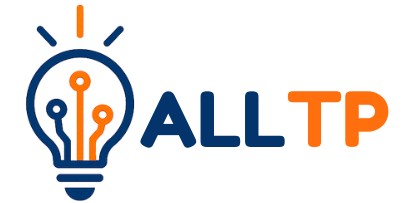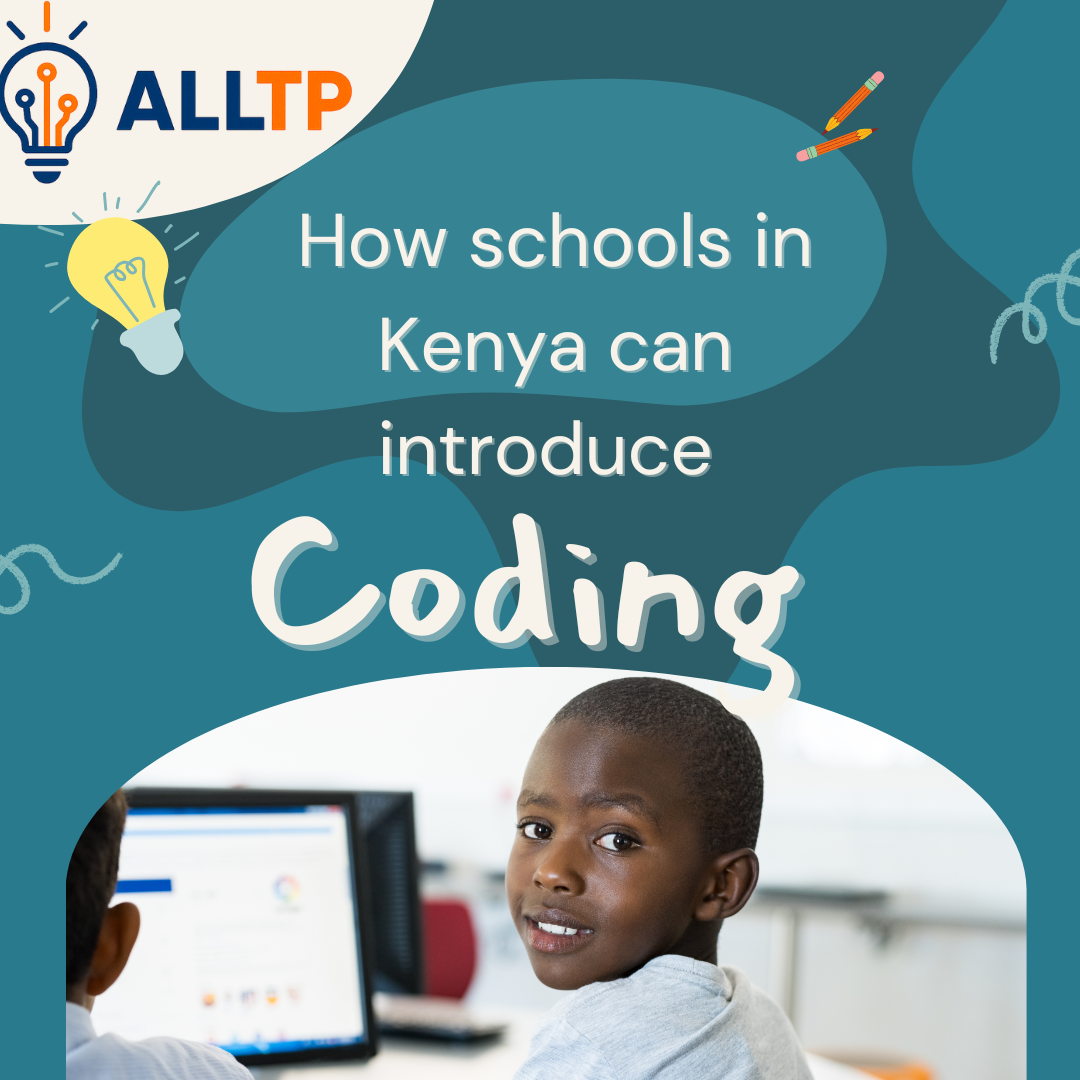In today’s rapidly evolving digital world, coding has emerged as the new literacy, a foundational skill as essential as reading, writing, and arithmetic. Just as the ability to read once unlocked opportunities during the industrial age, the ability to understand and create with code now opens doors in our tech-driven economy.
Now is the time to act. Introducing coding for kids, from simple unplugged activities to beginner-friendly programming platforms, is not only possible, it’s essential. Let’s empower our children to move from digital consumers to digital creators, and ensure every Kenyan learner is ready for the future of work and innovation. Enroll your child today in our Bootcamp and give them a head start in the digital economy.
This article explores practical, achievable strategies for introducing coding in Kenyan schools, even in environments with limited resources. Whether you’re a teacher, school leader, policymaker, or concerned parent, these insights can help kickstart the journey to prepare students for the 21st-century digital economy.
Why Coding Matters for Kenyan Students
1. Digital Transformation in Kenya
Kenya is at the forefront of Africa’s digital revolution. With innovations like M-Pesa, widespread internet access, and a booming tech startup scene, the country is increasingly relying on technology to drive growth across sectors, from agriculture and healthcare to education and finance. As digital tools become more integrated into daily life, it’s essential that the next generation not only uses technology but also understands how it works. Teaching coding in schools ensures that Kenyan students are not just passive consumers of digital content, but active creators and innovators.
2. Coding as a Critical Skill for Future Jobs
The job market is changing rapidly. Many of the careers that today’s students will pursue, whether in software development, data analysis, automation, or even agriculture, will require some form of digital competency. Coding is more than just writing lines of instructions for a computer; it’s a way of thinking that teaches students how to break down problems, identify patterns, and create solutions. By learning to code, Kenyan students gain a future-proof skill set that prepares them for careers in both local and global economies.
3. Supports CBC (Competency-Based Curriculum) Goals
Kenya’s Competency-Based Curriculum (CBC) is designed to nurture learners who are empowered, innovative, and adaptable. Coding fits naturally into this framework. It supports inquiry-based learning, encourages collaboration, and promotes critical thinking, all key tenets of CBC. For instance, students can apply computational thinking to solve real-world problems, work in teams to build tech projects, and present their work, integrating communication and creativity along the way.
4. Develops Creativity, Logic, and Problem-Solving
Coding isn’t just about computers; it’s about thinking creatively and logically. Whether students are designing a simple game, building an app, or programming a robot, they’re engaging in problem-solving activities that require resilience and critical thinking. Coding teaches kids how to try, fail, learn, and try again, valuable skills both in and outside the classroom.
Assessing Readiness in Kenyan Schools
Before coding can be introduced effectively in schools across Kenya, it’s important to evaluate the current landscape and understand where gaps exist. This assessment helps schools, educators, and policymakers make informed, practical decisions based on real conditions on the ground.
1. Understanding Current ICT Infrastructure
While the Kenyan government has made significant investments in digital learning through initiatives like the Digital Literacy Programme (DLP), many schools still face challenges such as:
- Inadequate computers or devices
- Limited internet connectivity
- Inconsistent electricity supply
Some schools, especially in rural areas, lack computer labs altogether. However, even in such settings, schools can begin with unplugged coding activities, simple exercises that teach coding logic without using computers.
2. Teacher Training Needs
Most teachers in Kenya have not been formally trained to teach coding or digital skills. While many are enthusiastic about tech integration, they may lack confidence or experience. This highlights the need for:
- Basic ICT and coding training for teachers
- Access to online courses, workshops, or partnerships with tech organizations
- Peer-to-peer learning or mentorship models within schools
Without trained educators, even the best infrastructure cannot be utilized effectively. Training teachers is the most crucial investment in making coding education sustainable.
3. Curriculum Gaps and Opportunities
Currently, coding in Kenya is not a mandatory part of the national curriculum, though digital literacy is encouraged under CBC. This presents both a challenge and an opportunity:
- Challenge: Schools may be uncertain about how or where to fit coding into the academic schedule.
- Opportunity: Coding can be introduced as a co-curricular activity, a club, or as part of practical lessons in subjects like science or math.
The flexibility of the CBC allows forward-thinking schools to pilot coding in a way that fits their learners’ needs, setting a strong foundation for future curriculum integration.
Steps Schools Can Take to Introduce Coding
Introducing coding in Kenyan schools doesn’t require expensive equipment or a complete curriculum overhaul. With strategic planning and collaboration, schools can begin offering meaningful coding experiences even with limited resources. Here’s how:
1. Start with Awareness and Advocacy
The first step is building a shared understanding of why coding matters.
- Engage all stakeholders, teachers, parents, school heads, and Boards of Management, so they understand the value of coding for students’ futures.
- Host coding bootcamps or demo days to showcase student projects and demonstrate how coding works in simple, fun ways.
- Invite local developers or tech professionals to speak at school events and inspire students.
Creating excitement and buy-in lays the groundwork for long-term success.
2. Train the Teachers First
No coding program can succeed without confident, knowledgeable teachers. Allthingsprogramming will teach teachers how to teach coding and programming for free. Teachers are taught using self-paced courses and live classes.
- Partner with organizations that provide CPD (Continuous Professional Development) in digital literacy and coding. Many EdTech groups offer teacher training workshops or bootcamps.
- Encourage teachers to take free, self-paced online courses from platforms like Allthingsprogramming.com, Scratch, Code.org, Khan Academy, or CS First by Google.
Even teachers without prior coding experience can quickly learn the basics with proper support.
3. Begin with Simple, Age-Appropriate Tools
It’s important to match coding tools with students’ developmental levels.
- Early primary (Grades 1–3): Use unplugged activities (like puzzles, games, or storytelling) that teach programming logic without a computer.
- Upper primary (Grades 4–6): Introduce visual programming platforms like Scratch and Blockly, which are engaging and beginner-friendly.
- Secondary level: Teach real-world languages such as Python, HTML/CSS, and even explore Arduino for students interested in robotics and electronics.
These tools are accessible, often free, and designed for educational use.
4. Use Available Devices Creatively
Lack of devices shouldn’t be a barrier to getting started.
- Share available laptops or tablets in small groups.
- Create rotation schedules so each student gets hands-on time.
- Start coding clubs that meet after school or during breaks for focused practice with limited resources.
Some schools have even used projectors or TVs to facilitate group coding sessions when devices are few.
5. Leverage Partnerships and NGOs
Many organizations are already supporting digital skills education in Kenya.
- Schools can collaborate with NGOs and tech hubs to gain access to devices, training, and mentorship.
- Notable organizations include:
- AkiraChix – coding for girls and women
- KidsComp Camp – bringing coding to rural schools
- Moringa School – offering programs and mentorship for youth
These partnerships can bridge the gap between ambition and implementation.
6. Integrate Coding into CBC Subjects
Coding doesn’t have to be a standalone subject.
- Align coding activities with CBC learning outcomes in math, science, or even social studies.
- Use project-based learning, such as:
- Building a weather app in a science lesson
- Creating a quiz game to revise history topics
- Programming LED circuits in practical tech classes
This makes coding relevant and helps students see real-world applications.
Challenges and How to Overcome Them
While the benefits of teaching coding in Kenyan schools are clear, implementing it comes with real challenges, especially in low-resource environments. Fortunately, these challenges are not insurmountable. With creativity, collaboration, and strategic planning, schools can take meaningful steps forward.
1. Lack of Infrastructure – Use Offline Coding Activities
Many schools, particularly in rural areas, lack reliable access to computers, internet, or electricity. However, this does not mean coding is out of reach.
- Introduce unplugged coding activities that teach fundamental programming concepts using everyday materials like cards, dice, or paper grids.
- Use offline versions of platforms like Scratch or Turtle Art, which can run on basic computers without an internet connection.
- Encourage students to simulate algorithms through games and storytelling, building problem-solving skills even without devices.
2. Limited Teacher Capacity – Peer Learning and Micro-Courses
Teachers may feel unequipped to teach coding due to lack of training or fear of technology.
- Promote peer learning, where teachers who are tech-savvy mentor others within the school.
- Encourage participation in micro-courses, short, focused online lessons that introduce key concepts in a manageable format.
- Partner with EdTech organizations that offer teacher support communities and blended learning models.
Empowering teachers is the fastest way to scale coding education.
3. Cost Concerns – Open-Source Platforms and Free Resources
Budget constraints can limit schools from purchasing commercial software or hiring ICT specialists. However, there are many powerful tools available at no cost.
- Use free and open-source platforms such as:
- Scratch
- Code.org
- Khan Academy
- CS Unplugged
- Encourage students to access free tutorials and challenges at home if internet is available.
By focusing on freely available tools, schools can provide high-quality coding education without breaking the bank.
4. Curriculum Rigidity – Pilot Programs and Extracurricular Clubs
Some schools may struggle to fit coding into already packed timetables or face resistance due to a lack of official curriculum support.
- Launch pilot coding programs or integrate coding projects into elective or “life skills” classes.
- Create coding clubs where interested students can explore programming outside regular class hours.
- Gather data and success stories from these initiatives to advocate for broader integration in the future.
Starting small allows schools to experiment, adapt, and grow coding programs sustainably.
Policy and Government Support
The successful integration of coding in Kenyan schools requires more than just grassroots efforts, it depends heavily on supportive policies and national leadership. The government, particularly the Ministry of Education, plays a central role in enabling and scaling digital learning across the country.
1. Role of the Ministry of Education
The Ministry of Education is responsible for shaping the curriculum, teacher training, and school infrastructure. While coding is not yet a formal subject in Kenya’s Competency-Based Curriculum (CBC), the Ministry has:
- Introduced digital literacy as a cross-cutting theme in basic education
- Supported programs that integrate STEM and ICT learning at both primary and secondary levels
- Partnered with private-sector stakeholders and NGOs to roll out digital education tools
To fully mainstream coding, the Ministry could expand its role by:
- Including basic programming in CBC learning outcomes
- Encouraging teacher certification in coding instruction
- Supporting assessments that measure 21st-century skills like computational thinking
2. Opportunities Under the Digital Literacy Programme (DLP)
Launched in 2016, Kenya’s Digital Literacy Programme (DLP) aimed to equip public primary schools with devices and digital learning tools.
- So far, over 1 million devices have been distributed to schools across the country
- DLP has provided basic ICT infrastructure and teacher training in digital content delivery
This existing foundation can be leveraged to introduce coding, especially by:
- Updating digital content to include coding modules
- Using DLP devices to run offline platforms like Scratch
- Training teachers to use those devices for more than just content consumption
3. Importance of National ICT and Innovation Policy Alignment
Kenya’s broader national ICT policies and innovation agendas, such as the Digital Economy Blueprint, Kenya Vision 2030, and Ajira Digital Programme, all emphasize digital skills development.
For coding in schools to succeed:
- Educational goals must align with national digital transformation strategies
- Investment in teacher capacity, internet infrastructure, and content development must be prioritized
- A public-private framework should support sustainable digital skills development across all regions
By aligning education policies with Kenya’s digital future, the government can ensure that coding becomes an inclusive and transformative part of the school system, preparing students to thrive in an innovation-driven economy.
To conclude, Kenya’s future is digital, and schools are the gateway to preparing the next generation of thinkers, builders, and problem-solvers. While challenges exist, they are not insurmountable. From using unplugged coding activities to forming partnerships with local tech organizations, there are practical steps every school can take today to begin this journey.
By introducing coding for beginners, schools will not only meet the needs of the modern curriculum but also unlock students’ creativity, critical thinking, and potential to become leaders in Kenya’s innovation economy. Enroll your child today in our Bootcamp and give them a head start in tech with fun, practical coding lessons designed for young minds.




